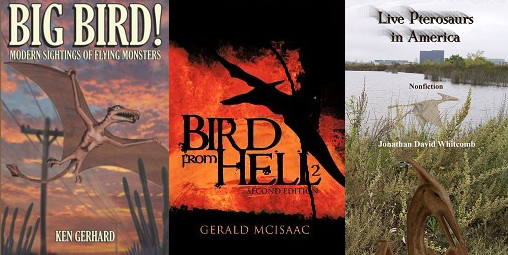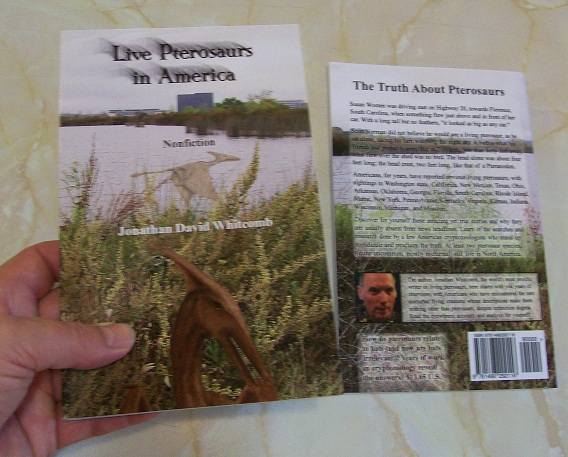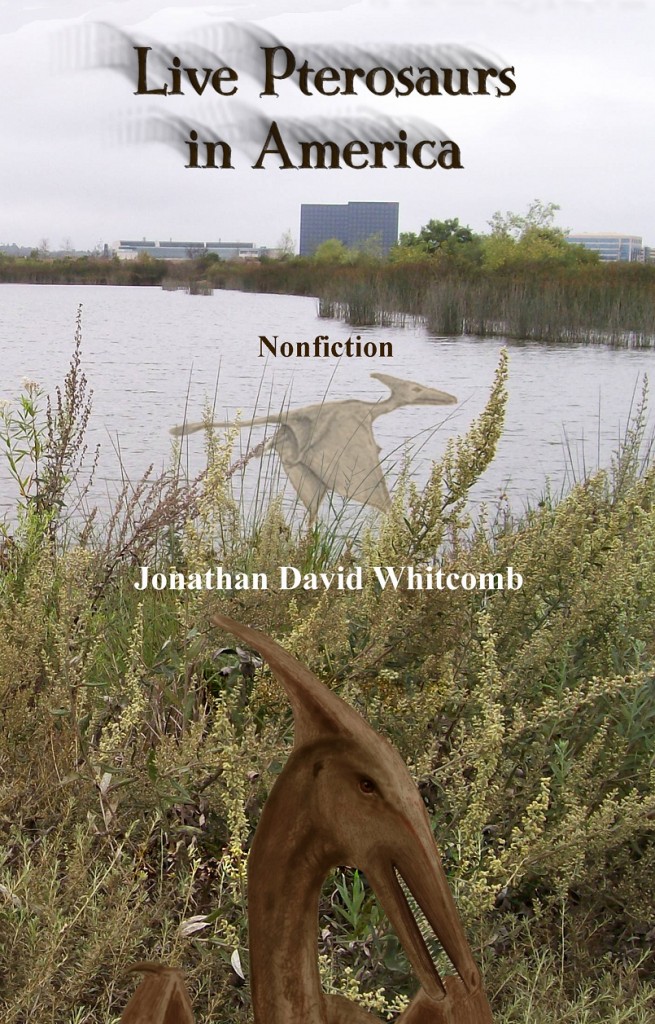In II Corinthians 13:1, we read (King James Version), “In the mouth of two or three witnesses shall every word be established.” We now have three nonfiction cryptozoology books, three witnesses of living pterosaurs in North America. The three authors, each with his own philosophy or religious inclination, independently wrote about sightings of apparent pterosaurs in North America, even though the three books give three different perspectives. What do they have in common? They provide readers with eyewitness accounts that clearly suggest pterosaurs are not extinct but living, even in North America. How are they different? In part, they concentrate on different sources and at least somewhat on different locations of sightings.
Let’s take a glance at these three cryptozoology books about modern living pterosaurs in North America, including some key positive reviews.
Live Pterosaurs in America (third edition) by Jonathan David Whitcomb
My third edition of Live Pterosaurs in America mentions the word “Bible” only four times, for this really is a cryptozoology book, not a religious book. Nevertheless, a few sentences mention the contributions of Biblical Creationists whose faith in the Divine preservation of species has made possible their explorations and research in the hope of the discovery of living pterosaurs. But those few sentences make up less than one percent of the book. Since writing the first edition of my first book (Searching for Ropens), I have decided to keep religious ideas mostly in religious books, not in publications that are primarily of the cryptozoology genre.
Part of one of the Amazon reviews of Live Pterosaurs in America:
I couldn’t put this book down. It is absolutely fascinating to read about eyewitness accounts of the people who have seen these creatures. To learn about these testimonies from such an open minded perspective is refreshing in the extreme! . . . People should know the truth about what is going on. No one ever hears anything about this unless they conduct extremely specific internet searches, even then, information is minimal. Jonathan Whitcomb needs to write more books! (Review of second edition by StrangeDream)
Bird From Hell (second edition) by Gerald McIsaac
The author seems to have no problem with ideas about pterosaurs living millions of years ago, so I doubt that he is a Young Earth Creationist. Not every page is directly related to sightings of living pterosaurs, but the book is mostly related to sightings of apparent pterosaurs in Canada.
A five-star Amazon review of Bird From Hell, first edition:
There’s something out there and this guy knows it! Won’t be long before he finds a live specimen.
Big Bird by Ken Gerhard
Although this book is not limited to apparent pterosaurs, much of it is about possible pterosaurs in Texas. I don’t recall anything in Big Bird related to religion or the Bible, but that is not a judgement call, only an observation that living-pterosaur investigations can be done by cryptozoologists of various origin-beliefs, not just by Biblical Creationists.
One of the five-star reviews of Big Bird:
I was thoroughly intrigued by the author’s account of sightings and other evidence of the existence of these fascinating creatures. A highly enjoyable reading experience!
The scientific works of Isaac Newton are not dismissed because of his belief in the Bible; why dismiss the work of modern cryptozoologists who investigate eyewitness accounts of apparent living pterosaurs?
New Form of Living-Pterosaur Investigation
Now, at the dawn of 2012, it is becoming obvious that cryptozoological investigations of reports of living pterosaurs is no longer just a YEC quest. The eyewitness sighting reports from North America alone have resulted in three nonfiction cryptozoology books being written by three authors, apparently none of whom is a YEC Creationist, at least in the strict sense.
New Form of Living Pterosaur Investigation
Now, at the dawn of 2012, it is becoming obvious that cryptozoological investigations of reports of living pterosaurs is no longer just a YEC quest. The eyewitness sighting reports from North America alone have resulted in three nonfiction cryptozoology books being written by three authors, apparently none of whom is a YEC Creationist, at least in the strict sense.





